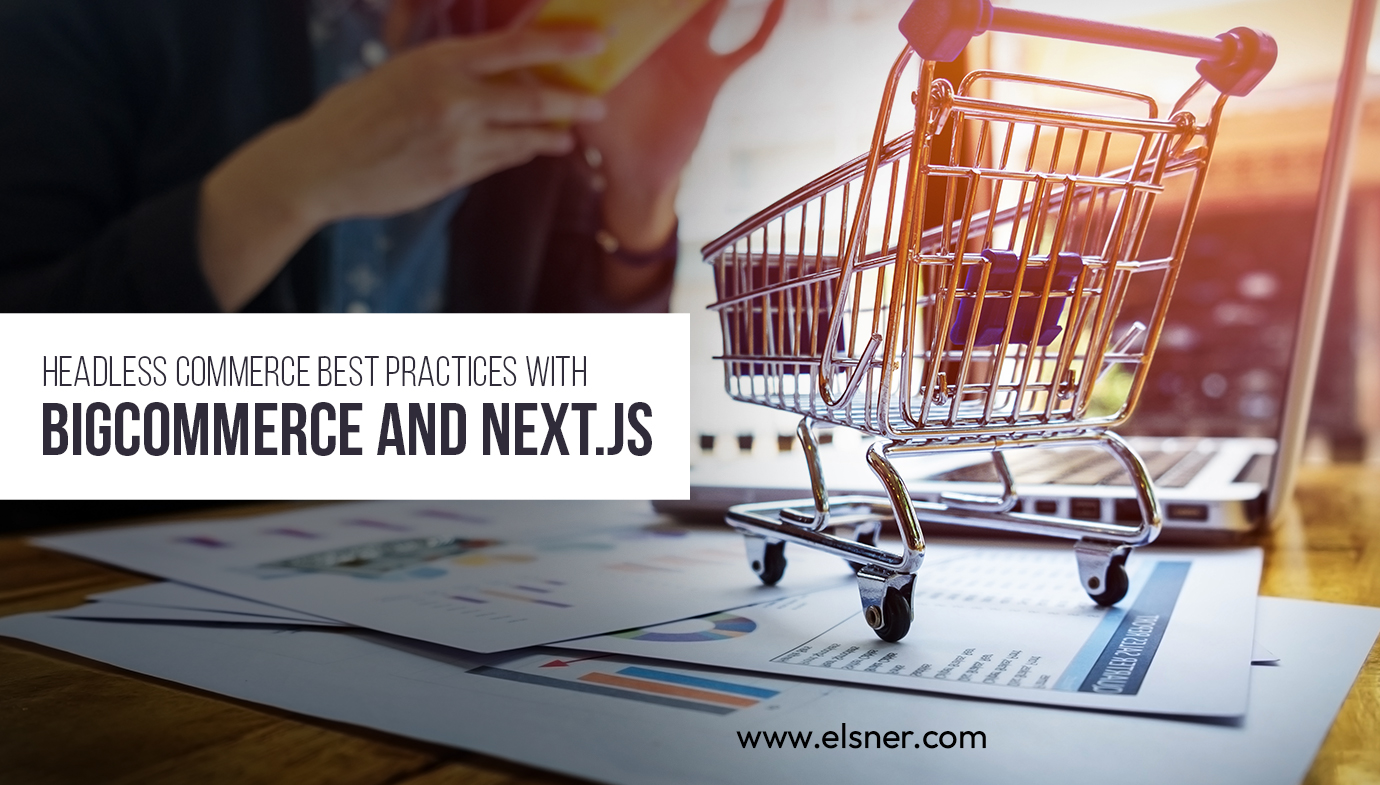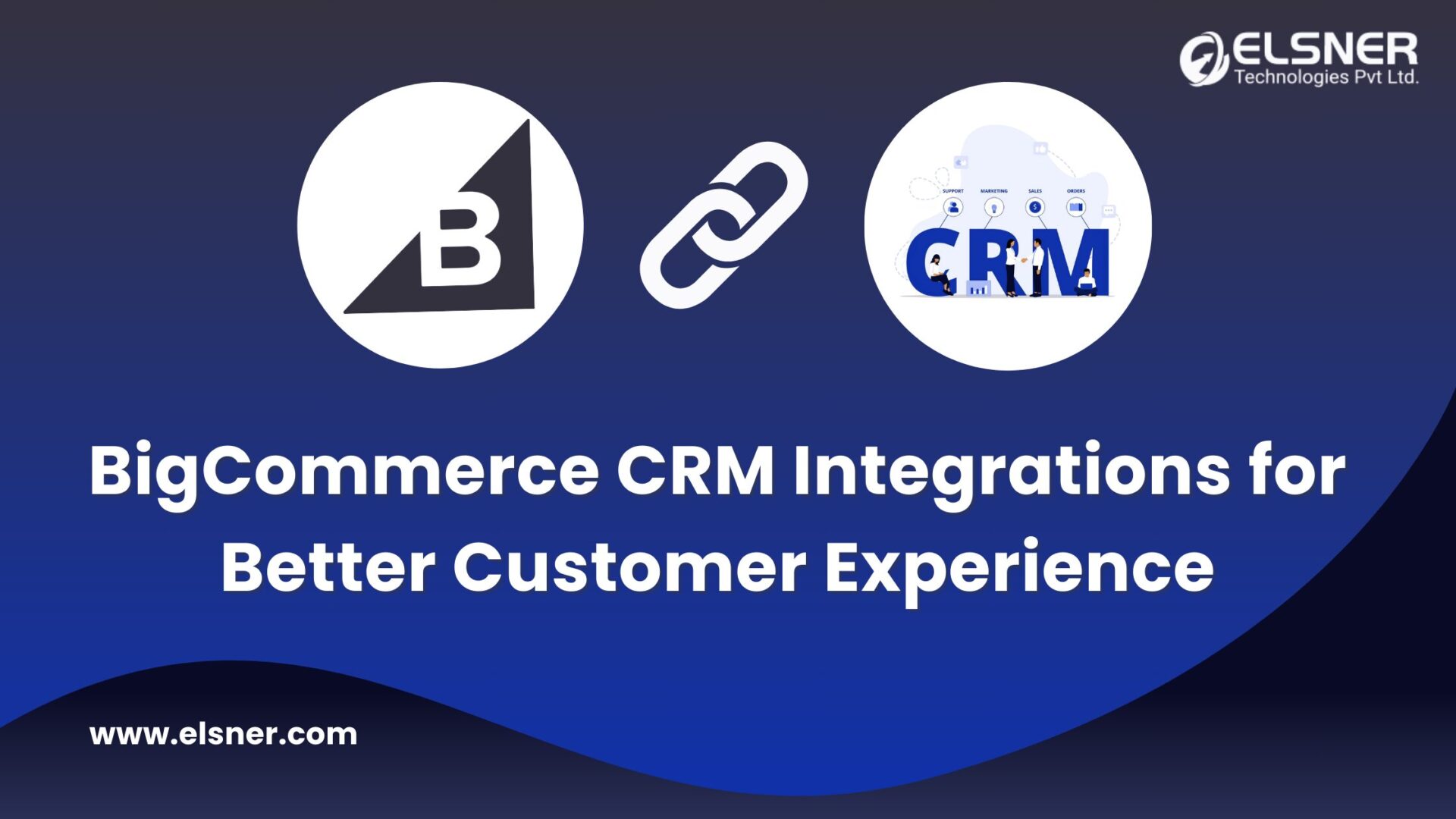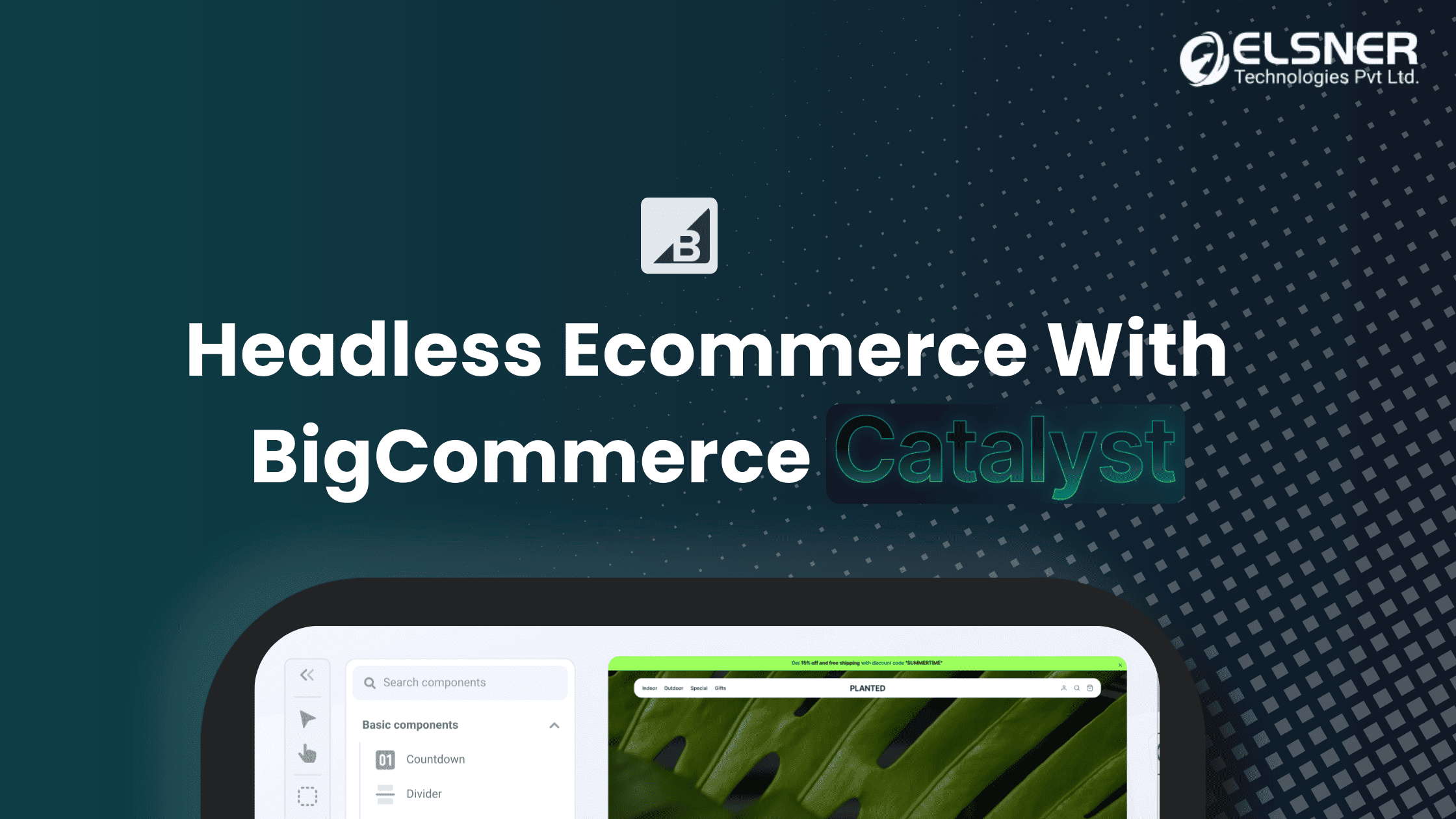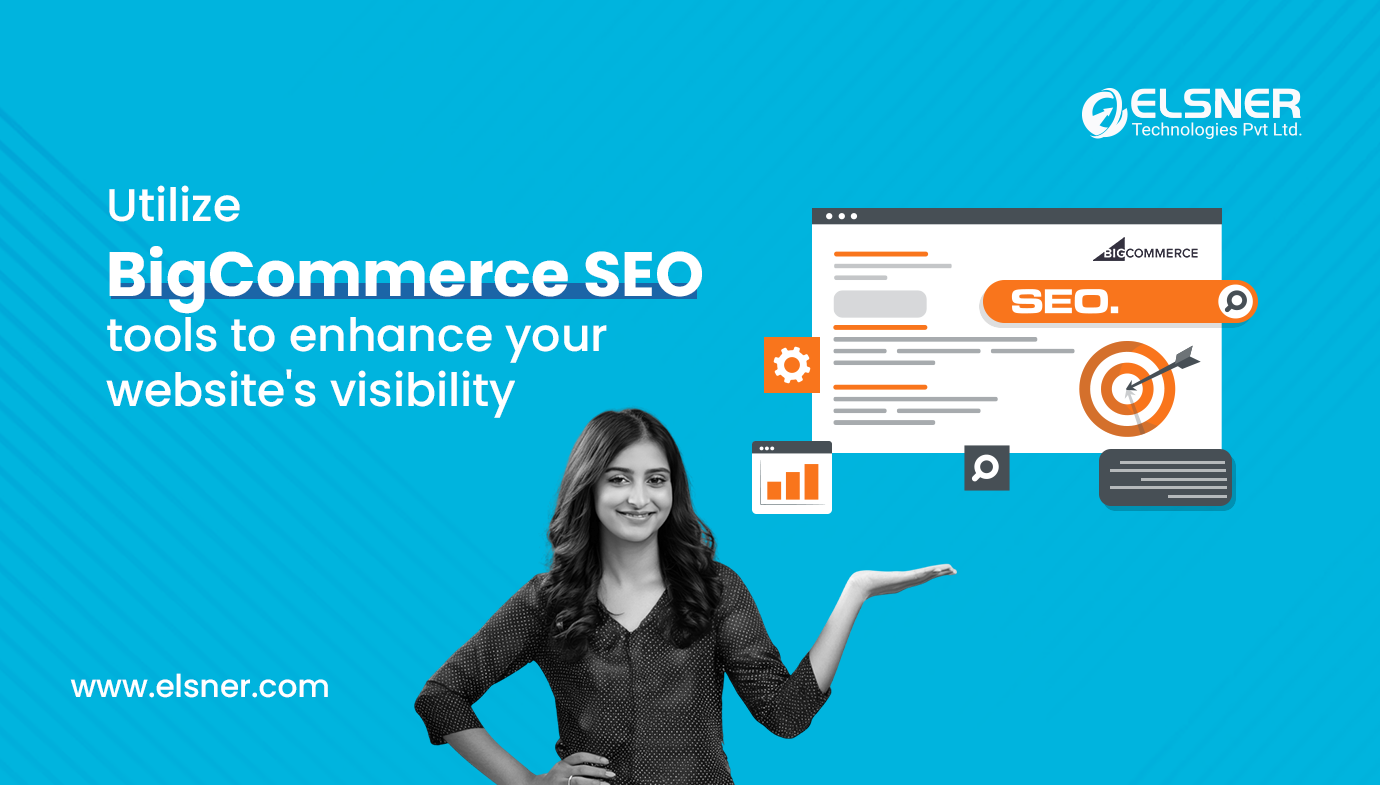- What is headless commerce?
- What is BigCommerce?
- What is Next.js?
- How to use headless commerce with BigCommerce and Next.js?
- 1. Use a Customizable Frontend:
- 2. Implement Server-Side Rendering:
- 3. Use GraphQL to Fetch Data:
- 4. Optimize Performance:
- 5. Ensure Security:
- 6. Proper error handling:
- 7. Caching to improve performance:
- 8. Analytics and monitoring:
- 9. Third-party libraries and frameworks:
- 10. Modern frontend stack:
- Wrapping it up!
Headless commerce has become increasingly popular in recent years, as it provides a flexible and scalable way to manage the front end and back end of an online store separately.
Regarding headless commerce, Next.js and BigCommerce development services are two popular platforms that can be used to create a fast and powerful e-commerce site.
In this content piece, we will discuss some best features, benefits, and practices for using BigCommerce and Next.js together in a headless commerce setup.
What is headless commerce?
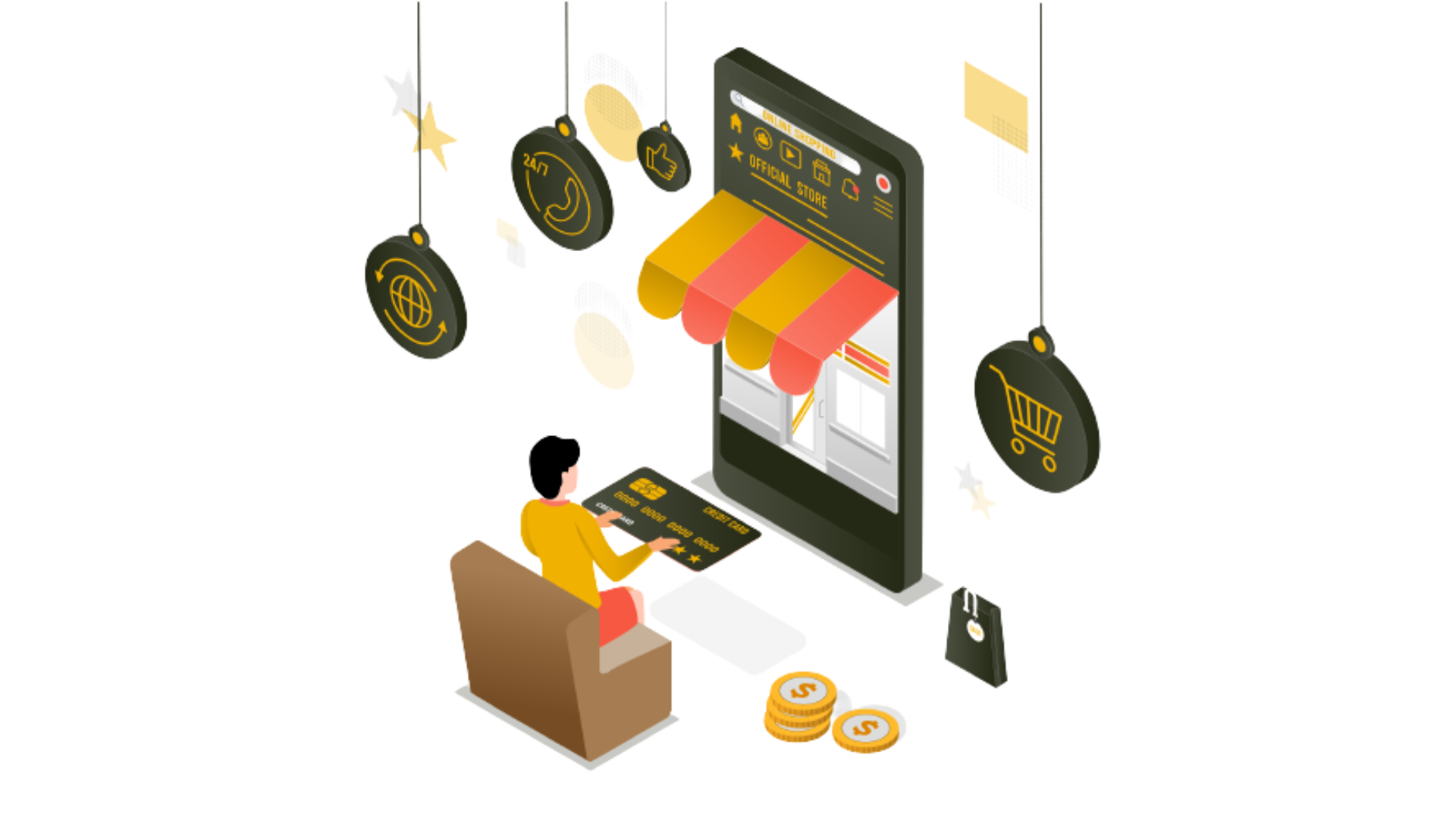
[Image Source: freepik]
Headless commerce is a model of e-commerce architecture where the frontend presentation layer of an online store is decoupled from the backend e-commerce functionality. In other words, headless commerce separates the user interface or the presentation layer from the backend that handles the business logic and transactions.
In a headless commerce model, the frontend presentation layer can be built using any technology or platform, such as a web or mobile app. At the same time, a separate system provides the backend commerce functionality. This approach allows retailers greater flexibility and control over the user experience while maintaining the necessary backend functionality.
This can lead to faster development and deployment times and greater agility for retailers as they handle the changing market conditions and customer needs.
What is BigCommerce?
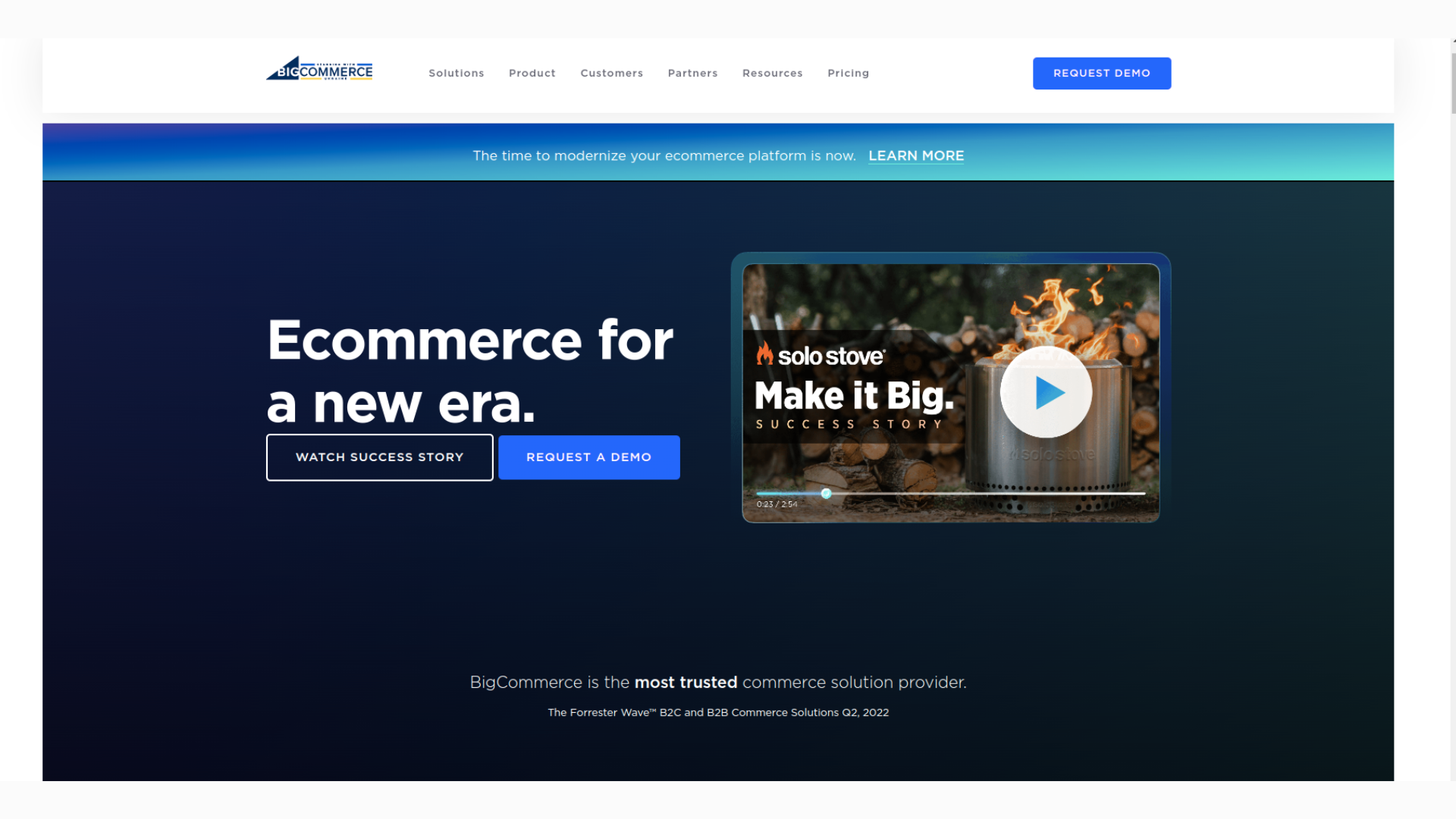
[Image Source: BigCommerce]
It is a cloud-based e-commerce platform that allows businesses of all sizes to create, launch, and manage online stores. In addition, the platform offers various features and tools to help businesses build, scale, and optimize their online stores.
BigCommerce is designed to be user-friendly and accessible to businesses with little or no technical expertise. It provides many templates and themes to help businesses quickly and easily create professional-looking online stores.
Let us look at some unique features:
- Ease of Usage: BigCommerce offers a user-friendly platform that is easy for businesses of all sizes without requiring technical expertise.
- Design and Customization: The platform offers a range of templates and themes that can be customized to create a unique online store. It also offers a drag-and-drop interface that makes building and modifying pages easy.
- Mobile Optimization: BigCommerce offers mobile-optimized designs and allows businesses to easily create a responsive website that works well on mobile devices.
- Payment and Shipping: The platform supports various payment options, including credit cards, PayPal, Apple Pay, and others. It also provides built-in shipping integrations, real-time quotes, and label printing.
- Inventory Management: BigCommerce offers tools to manage inventory, set up automated restocking, and manage product variations, such as color and size.
- Marketing and SEO: The platform provides built-in SEO tools and integrations with popular marketing platforms, such as Google Shopping and Facebook Ads.
- Analytics and Reporting: BigCommerce offers tools to help businesses understand their website performance, customer behavior, and sales data.
- Security and Reliability: The platform is highly secure and provides reliable hosting, ensuring website uptime and data protection.
- Integration: BigCommerce allows integration with popular third-party apps and services, including accounting software, email marketing, and social media platforms.
What is Next.js?
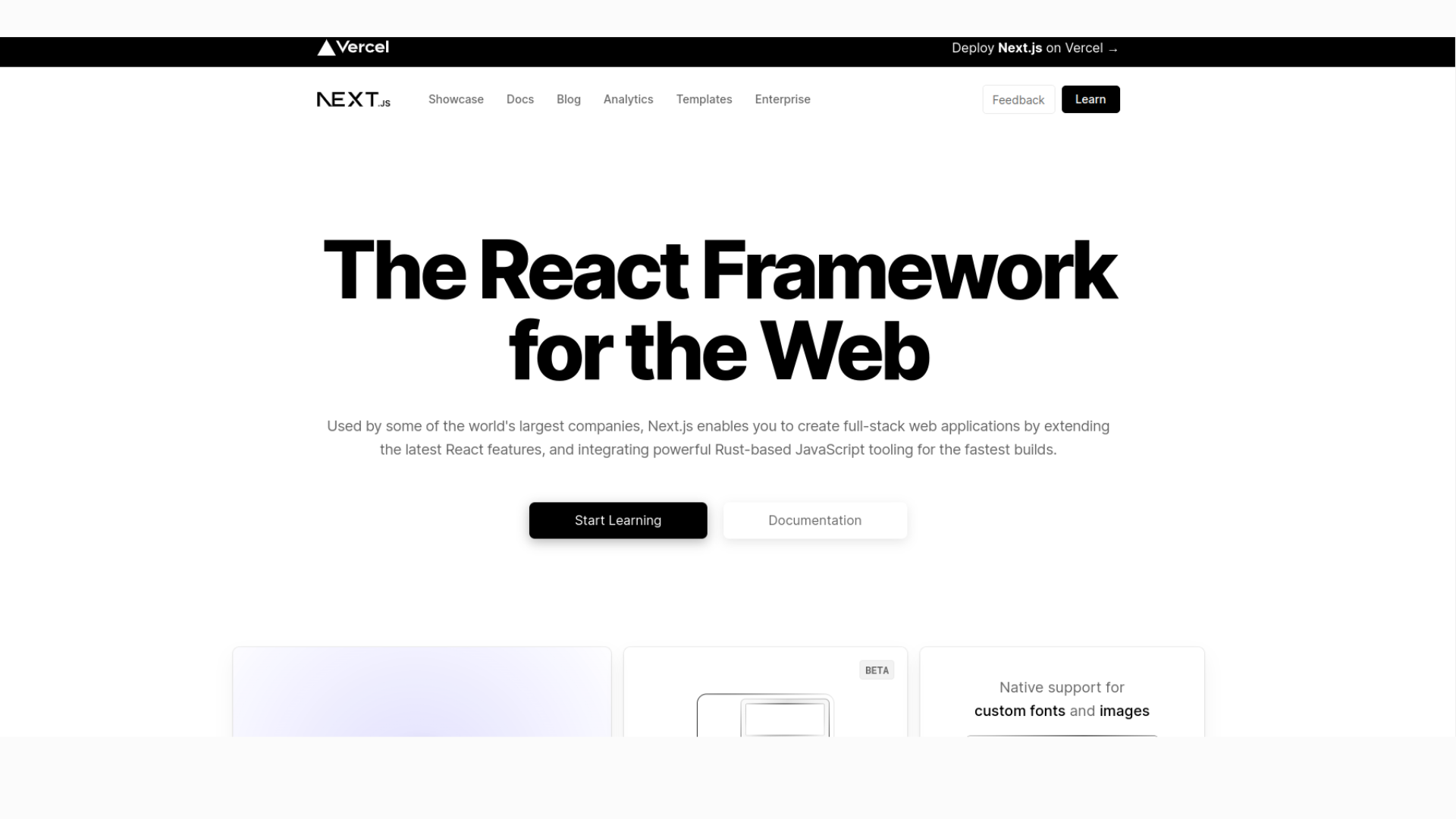
[Image Source: Next.js]
It is an open-source React-based framework for building server-rendered and statically-generated web applications. It is a popular tool for building modern web applications, particularly those that require server-side rendering or SEO optimization.
Next.js offers several features:
- Server-side rendering: It provides server-side rendering out of the box, which can improve the performance of web applications by rendering content on the server before sending it to the client.
- Static site generation: This tool can generate a fully static website at build time, allowing the website to be hosted on a CDN and served instantly to users.
- Automatic code splitting: It will automatically split code into smaller chunks, improving the application’s performance by only loading the necessary code when required.
- Automatic optimization: Users can optimize images, minify CSS and JavaScript, and performs other optimizations to improve the application’s performance.
- Dynamic imports: Next.js allows dynamic imports, which can be used to split code based on the user’s device, location, or other factors.
- API routes: Users can create serverless API routes, making it easy to create and manage APIs for your application.
How to use headless commerce with BigCommerce and Next.js?
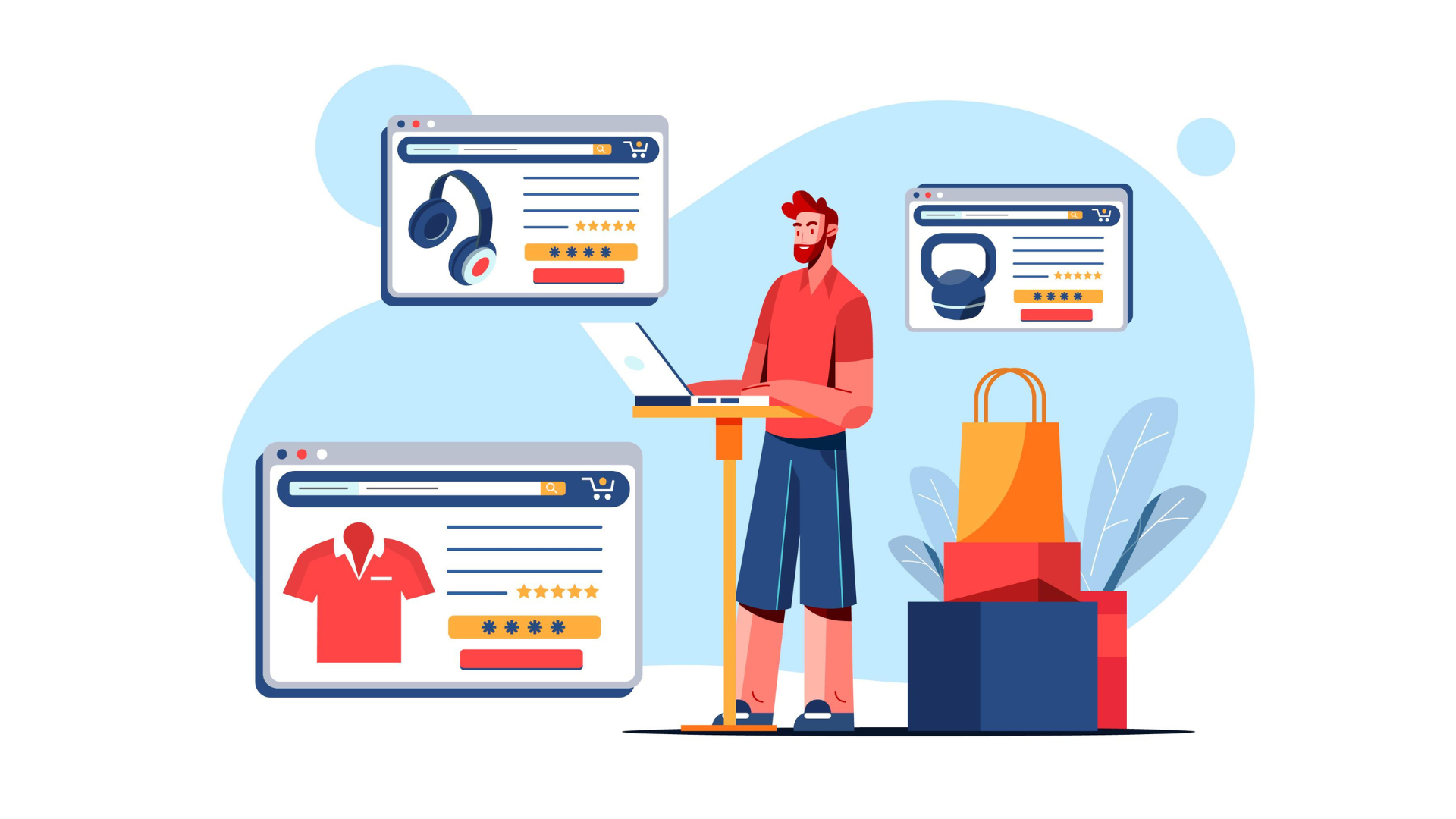
[Image Source: freepik]
Here are the general steps to use headless commerce with BigCommerce and Next.js:
1. Use a Customizable Frontend:
One of the key advantages of headless commerce is the ability to customize the front end of an online store to suit your specific needs. You can hire expert BigCommerce developers and Next.js, and it’s important to use a highly customizable and flexible font. Next.js is a great choice, as it allows you to create custom pages and components to fit your needs easily. You can also use pre-built UI libraries like Tailwind or Bootstrap to speed up your development.
2. Implement Server-Side Rendering:
Server-side rendering (SSR) can improve the performance of your e-commerce site by reducing page load times and improving SEO. Next.js provides built-in support for SSR, which can be easily implemented for your BigCommerce store. This will allow you to generate dynamic pages on the server side and deliver a fast and responsive user experience.
3. Use GraphQL to Fetch Data:
When building a headless commerce site with BigCommerce and Next.js, it’s important to use a modern and efficient data fetching method. GraphQL is a popular choice, as it allows you to fetch and filter data from your BigCommerce store efficiently. You can use the BigCommerce GraphQL API to access your store’s data and then use Apollo Client to manage your queries and cache.
4. Optimize Performance:
Performance is a crucial factor in the success of an e-commerce site. Therefore, optimizing your site for performance is important when using BigCommerce and Next.js in a headless commerce setup. This includes minimizing the size of your assets, leveraging caching, and using a Content Delivery Network (CDN) to serve your site’s assets from multiple locations worldwide.
5. Ensure Security:
Security is always a concern when it comes to e-commerce sites. When using BigCommerce and Next.js together in a headless commerce setup, it’s important to ensure that your site is secure. This includes using SSL to encrypt data between the client and server, implementing user authentication and authorization, and protecting against common web vulnerabilities like XSS and CSRF attacks.
6. Proper error handling:
Implementing proper error handling in your application is important to ensure that users are not presented with error messages or unexpected behaviour. This can be achieved by handling errors gracefully, logging errors for debugging purposes, and providing informative error messages to users.
7. Caching to improve performance:
Caching can store frequently accessed data in memory, reducing the number of API calls needed. You can use a caching library to implement caching in your application. Be sure to set appropriate cache expiry times to ensure that cached data stays up to date.
8. Analytics and monitoring:
It can help you track your application’s performance, user behaviour, and errors. You can use tools like Google Analytics (GA4), Sentry, or LogRocket to monitor your application and get insights into its use. This can help you make data-driven decisions to improve your application’s user experience and performance.
9. Third-party libraries and frameworks:
Some many third-party libraries and frameworks can help you develop your headless commerce platforms application faster and with less code. For example, you can use BigCommerce’s official SDK to interact with the BigCommerce API or use a UI library like Material UI or Ant Design to create beautiful and functional user interfaces quickly.
10. Modern frontend stack:
Next.js is a React-based framework that provides a modern and efficient development experience. You can use other modern frontend tools like TypeScript, CSS-in-JS, and Webpack to optimize the performance and maintainability of your application.
Headless commerce is on the rise as decoupling the front and backend of ecommerce which brings more flexibility, scalability, and quicker response. However, there are always some challenges that you must overcome with the help of industry experts.
Using Next.js and BigCommerce development services together in a headless commerce setup provides a flexible and scalable way to create a fast and powerful e-commerce site. Following these best practices ensures that your site is customizable, performance, and secure.
Overall, using headless commerce with BigCommerce and Next.js requires a good understanding of both platforms and web development skills like JavaScript, React, and API integration. However, the resulting application can provide a flexible, scalable, and customizable e-commerce solution.
Browse More: Future of E-Commerce: Headless Commerce
Wrapping it up!
Following these best practices, you can build a powerful headless commerce website with BigCommerce and Next.js that provides a great user experience and high performance. Overall, the future of BigCommerce and NextJS is likely to be bright as these technologies continue to evolve with the rapidly changing e-commerce and web development landscape.
In the future, we can expect more integration between BigCommerce and NextJS as businesses seek to build more sophisticated and efficient e-commerce websites. We may also see continued development and innovation in both technologies, with new features and improvements being introduced to meet the changing needs of businesses and consumers.
If you have the right tools and techniques, you can build a headless commerce site that meets the unique needs of your business and provides a great user experience for your customers.

About Author
Dipak Patil - Delivery Head & Partner Manager
Dipak is known for his ability to seamlessly manage and deliver top-notch projects. With a strong emphasis on quality and customer satisfaction, he has built a reputation for fostering strong client relationships. His leadership and dedication have been instrumental in guiding teams towards success, ensuring timely and effective delivery of services.

